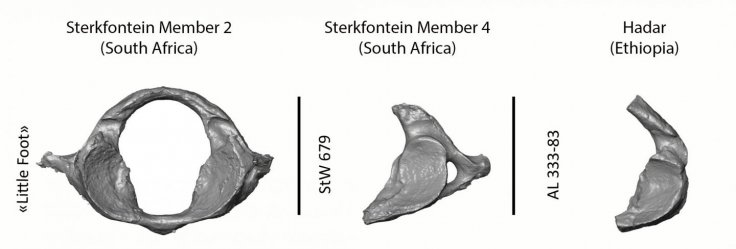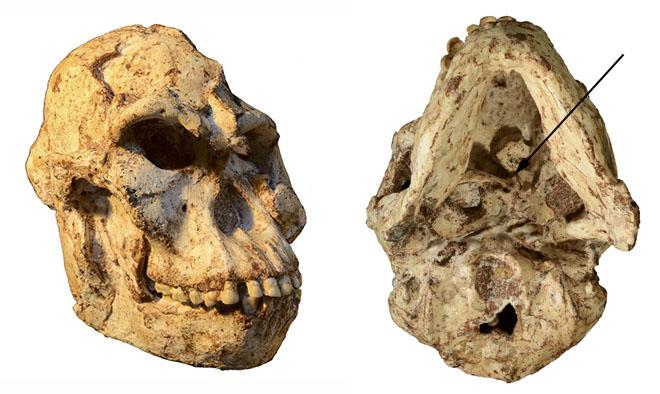A high-resolution micro-CT scan of the skull of an Australopithecus adult specimen known as "Little Foot" of the ~3.67 million-year-old fossil has revealed the most complete human adult's first cervical vertebra.
Researchers from Wits University compared the atlas or vertebra of "Little Foot" with other fossils from South and East Africa as well as chimpanzees, and found that the early Australopithecus species was capable of head movements that differ from modern humans.
Atlas that connects head and neck plays important role in blood flow
Led by Dr Amélie Beaudet, the team found that the atlas which connects the head and the neck also played a vital role in blood flow to the brain via the arteries. The findings were published in the journal Scientific Reports.

"The morphology of the first cervical vertebra, or atlas, reflects multiple aspects of an organism's life," says Beaudet. "In particular, the nearly complete atlas of 'Little Foot' has the potential to provide new insights into the evolution of head mobility and the arterial supply to the brain in the human lineage."
The shape of the atlas determines the range of head motions. The size of the arteries passing through the vertebrae to the skull helps estimate blood flow to the brain. The team studied both the parameters and found that Australopithecus was capable of head movements that differ from the modern humans.
"This could be explained by the greater ability of Australopithecus to climb and move in the trees. However, a southern African Australopithecus specimen younger than 'Little Foot' may have partially lost this capacity and spent more time on the ground, like us today," said Beaudet.

How most features of Little Foot are similar to chimpanzee
Interestingly, the overall features of the atlas of "Little Foot" are similar to chimpanzees, especially, the ligament insertions and the morphology of the facet joints linking the head and the neck, said the researchers. It also suggests that "Little Foot" was moving regularly in trees.
The study is unique in the sense, the team was able to study "Little Foot" since it is well-preserved, and provided insights into blood flow supply to the brain. They estimated that blood flow and the utilization of glucose by the brain were about three times lower than modern humans, but closer to chimpanzees.
"The low investment of energy into the brain of Australopithecus could be tentatively explained by a relatively small brain of the specimen, a low quality diet or high costs of other aspects of the biology of Australopithecus (such as upright walking). In any case, this might suggest that the human brain's vascular system emerged much later in our history," wrote the researchers.









